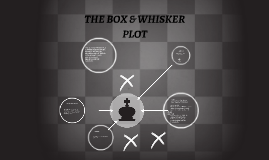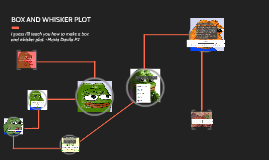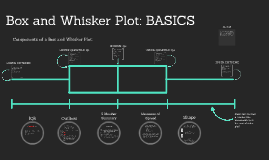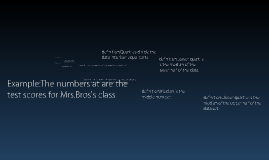Box and Whisker Plot
Transcript: 0 1 2 3 4 5 6 12 Min-0 Q1-5 Mid-10 Q3-45 Max-120 While doing this experiment, we found that the average Accelerated class takes one hour to do homework. The regular History class homework on average takes ten minutes. This has proved that the Accelerated class takes longer to complete homework. History Data- Min-30 Q1-45 Mid-60 Q3-110 Max-120 Accelerated- 40, 30, 60, 100, 120, 100, 120, 40, 50, 60, 120, 50 History- 20, 30, 10, 5, 10, 10, 5, 0, 10, 40, 50, 55, 60, 120, 10, 10, 5, 45, 0 0 00 00 00 00 000 00555 000000 0 0 05 05 0 0 How long it takes someone in regular History to do their homework vs. Accelerated. Why? 3 4 5 6 10 12 Reflections Box and Whisker Plot Paige Shema and Julia Cody More... We heard the the Accelerated History is much harder than the regular class. We wanted to find out if this is true by collecting data and figuring out if Regular History really does assign less homework than the Accelerated class. Scenario- Accelerated Stem and Leaf Plot We believe that in general it takes Accelerated classes longer to complete work because of the level of dificulty of the homework. We believe we got this result because the accelerated class is at a higher level of dificulty than the average class we must take. Another factor is that people in the accelerated class have to be tested into the class so they know they can understand the basics. The regular history class is a requirement, so people in that class might not be as motivated to do their homework. This data tells us that the accelerated class is harder and more intense with work. If you don’t have a good work ethic or don’t like history it might not be a good idea to take this class but if you want to get into higher history classes in the future or really like history and you're willing to put in the effort then this might be the class for you. Although, if we had different participants, the average will possibly be different as well as the Q1, Q3, Maximum and Minimum. If you were to use different classes, different teachers, or even grades, there could very well be a different box plot.

















